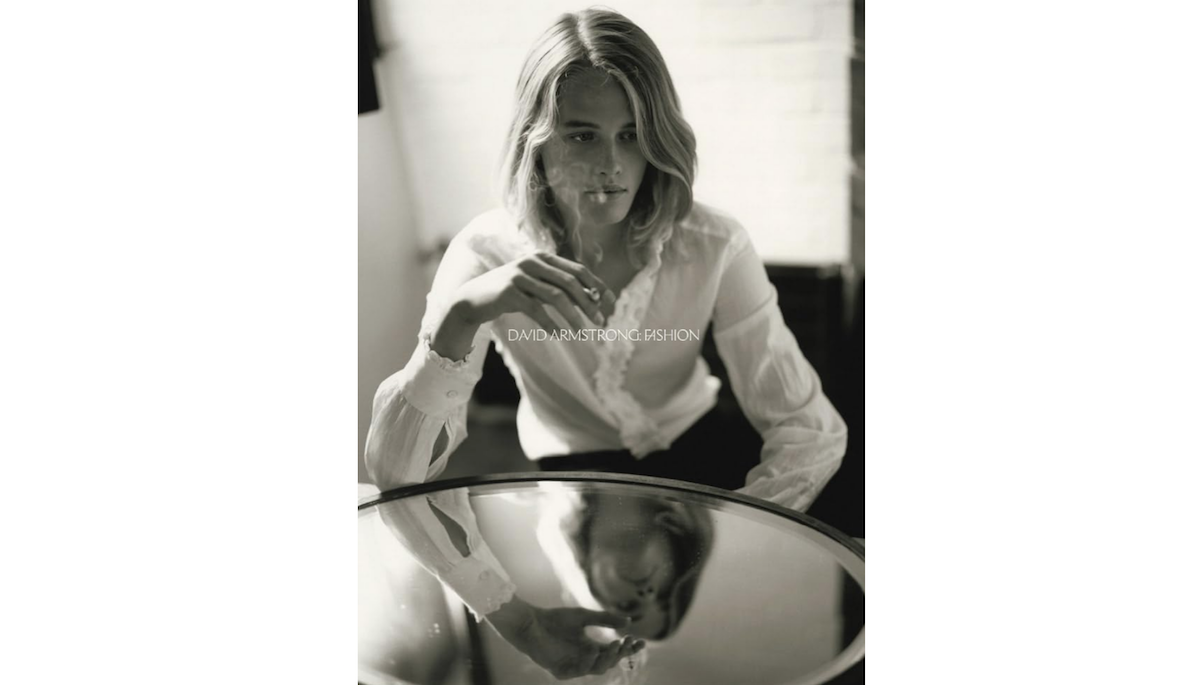Archives never lie, but they often surprise. Eighteen unassuming boxes marked “Fashion,” rescued from a Berkshire barn after David Armstrong died in 2014, have yielded their secrets in this first posthumous publication. What emerges isn’t merely a collection of commercial outtakes, but something far more intimate – Armstrong’s private laboratory for constructing queer beauty within fashion’s temporary kingdoms.
These 107 images (2002-2010) reveal Armstrong the alchemist, transforming magazine commissions into personal mythologies. Where contemporaries like Steven Meisel deployed fashion’s machinery to create fiction, Armstrong utilised its resources – the racks of clothing, the professional models, and the studio time – to manifest visions that had haunted his work since his days at the Boston School. The results occupy a thrilling middle ground: too polished to be snapshots, too psychologically raw to feel like traditional fashion spreads.
The book’s sequencing highlights Armstrong’s distinctive grammar of desire. A male model’s arched back echoes the curve of a chaise longue. A woman’s powdered décolletage becomes landscape. Fabric clings to bodies with the same tender attention Armstrong once lavished on downtown boys in cramped apartments. The through-line isn’t aesthetic perfection, but what curator Nicolas Ghesquière identifies as “the tremor of real encounter” – that moment when the performative mask slips to reveal something truer beneath.
Contextual essays by Lisa Love, Jae Choi and others trace how Armstrong’s editorial work diverged from industry norms. While mainstream fashion photography chased razor-sharp digital clarity, Armstrong insisted on film’s grain. Where others embraced clinical studio lighting, he sought the melancholy glow of late afternoon windows. His 2008 Zegna campaign, included here in multiple variants, looks less like luxury advertising than a series of Renaissance portrait studies – all shadowed jawlines and contemplative hands.
The publication serves as both tribute and corrective, expanding our understanding of an artist too often reduced to “Nan Goldin’s roommate.” Archival notes reveal Armstrong’s meticulous process: test Polaroids with exposure scribbles in grease pencil, contact sheets marked with wax pencil circles, handwritten instructions to printers about maintaining specific tonal values. These ephemera confirm what the images suggest – that for Armstrong, even commercial work was never just a paycheck, but part of his ongoing dialogue with beauty’s fleeting nature.
A particularly poignant spread reproduces Armstrong’s 2010 editorial for Wonderland magazine, featuring then-unknown model Teddy Quinlivan. The outtakes show Armstrong guiding Quinlivan (who would later come out as transgender) through poses that subtly interrogate gender codes—a thematic concern dating back to his 1970s portraits of Jack Pierson and other Boston queer luminaries. As Ethan James Green observes in his commentary, Armstrong possessed an uncanny ability to recognise and coax forth his subjects’ latent selves, whether shooting street kids or supermodels.
The book’s production values honour Armstrong’s exacting standards. Quadratone plates capture the velvety blacks of his darkroom prints, while uncoated paper stock replicates the tactile quality of his preferred matte surfaces. Brief but illuminating captions identify each image’s original commission, while noting Armstrong’s subsequent darkroom interventions—the dodging, burning, and toning that transformed assignments into personal statements.
More than just filling gaps in Armstrong’s catalogue, this volume complicates the straightforward narrative of his career. It shows how his fashion work wasn’t a departure from his art practice, but its natural extension – another method for pursuing what he called “the perfect, impossible moment” when light, form and emotion briefly align. The David Armstrong who emerges here isn’t just a chronicler of downtown’s heyday, but a visionary who continued refining his peculiar alchemy until the end. – PCR
*David Armstrong: Fashion Photographs (2002-2010)* Vince Aletti and Matthew Leifheit, published by Matte Editions. Out now.
Read More About David Armstrong
Buy this book HERE

